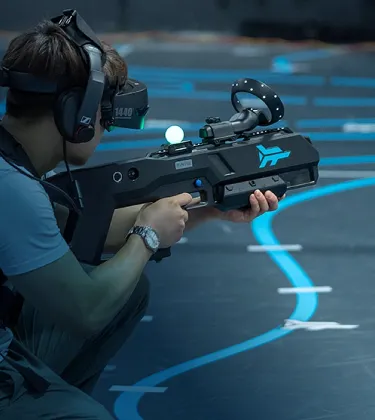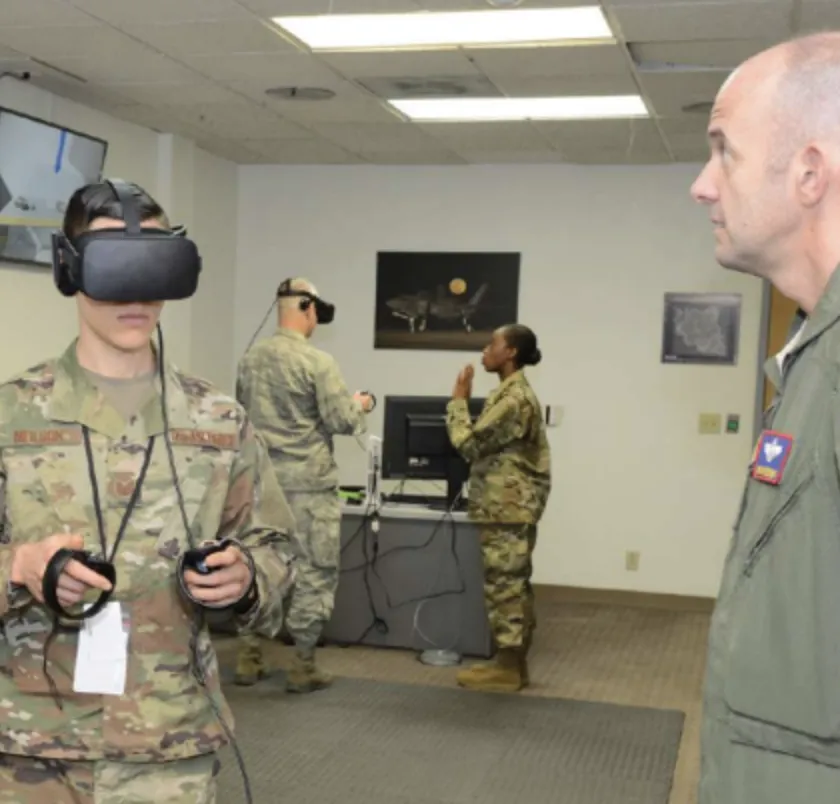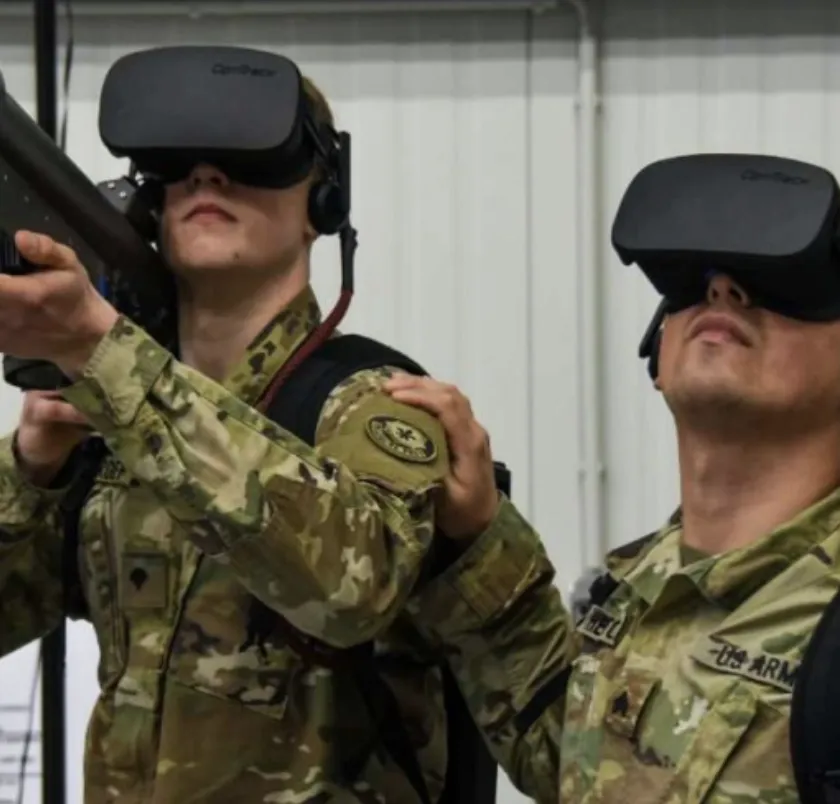



Realistic training simulations enhance preparedness, safety, and cost efficiency for defense and security forces.

Security & Defense
As defense and security forces delve deeper into newer technologies for training and equipping soldiers and security personnel, VR offers a robust digital platform for creating scenarios similar to real-life including on-field medical assistance, live combat, boot camp exercises, rescue operations and other relevant military and security training.
Ongoing defense cuts and the need to generate savings in training budgets and reduce accidents during exercises has seen rapid adoption of VR among the security and defense sector.

Use Cases for Security & Defense
VR solutions can deliver on-demand and personalized training, providing a greater degree of realism, reducing the risk of damage or injury, and better preparing operators for their deployments. These include
@2x.8a1ca5d7.webp)
Combat Readiness Training (Defense)
It overcomes limitations like weather, site availability, and equipment use, enhancing efficiency and accelerating combat readiness.
With haptic technology, soldiers can practice weapon handling, high-risk activities, and adapt to confined military environments like submarines and tanks.
VR also prepares personnel for high-stress situations, improving communication and combat techniques while training for real-world threats like sniper attacks or bombings.
@2x.247f9ef7.webp)
Hostage Rescue Operations (Security)
Officers use VR headsets and motion-tracked weapons to navigate hostage scenarios, identifying threats, rescuing victims, and neutralizing danger in a controlled setting.
Unlike video games, these simulations function like flight simulators, offering hands-on crisis management experience. Sensors track participants, enabling team-based training in a shared virtual space.
This technology allows officers to practice life-saving tactics in environments rarely encountered during traditional training.